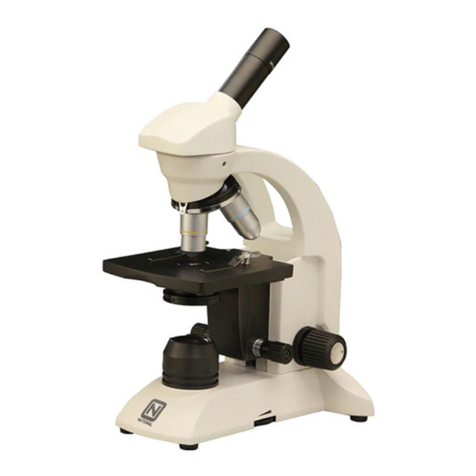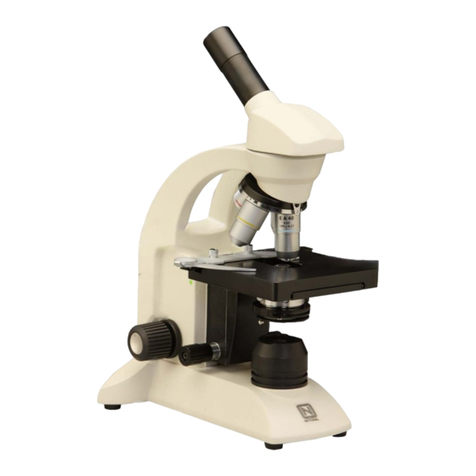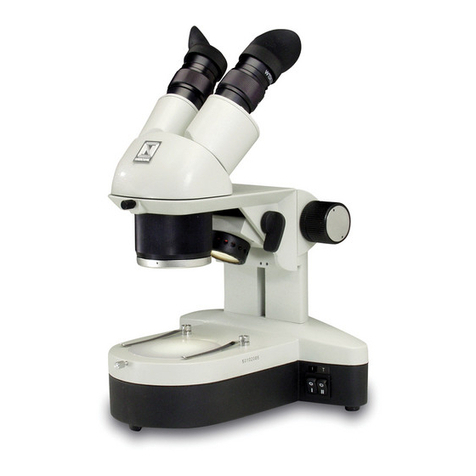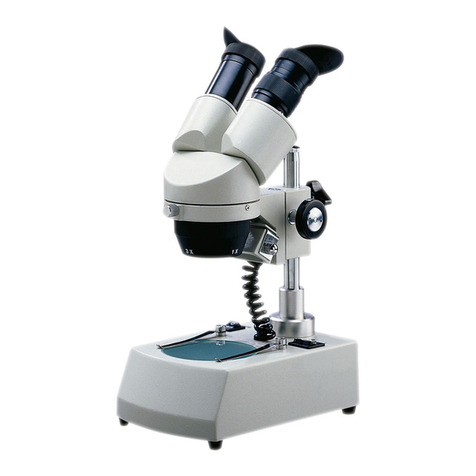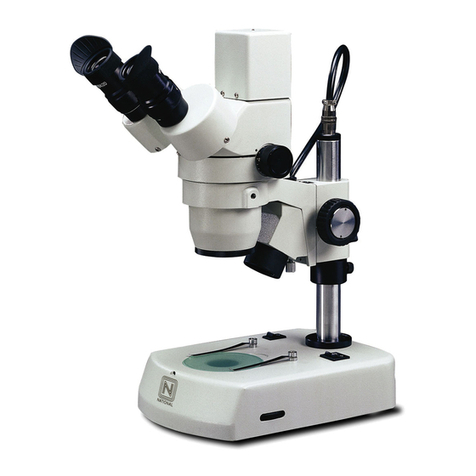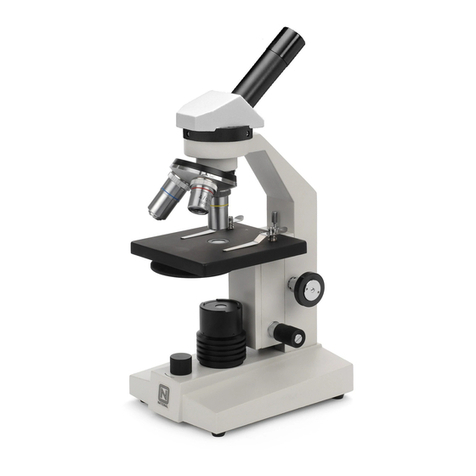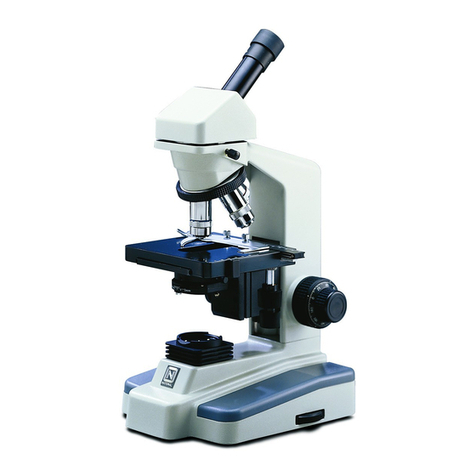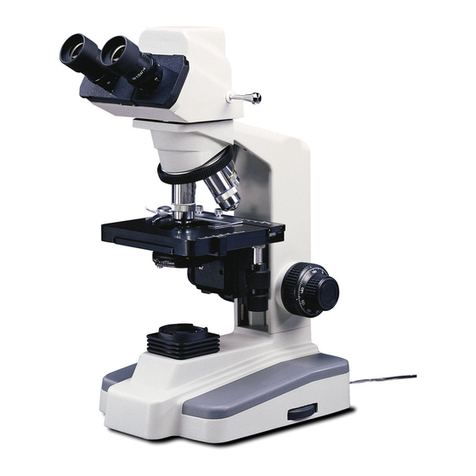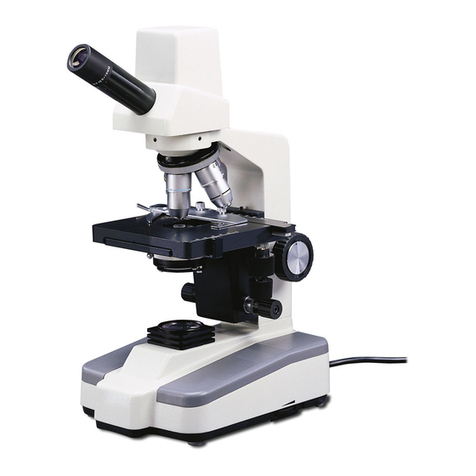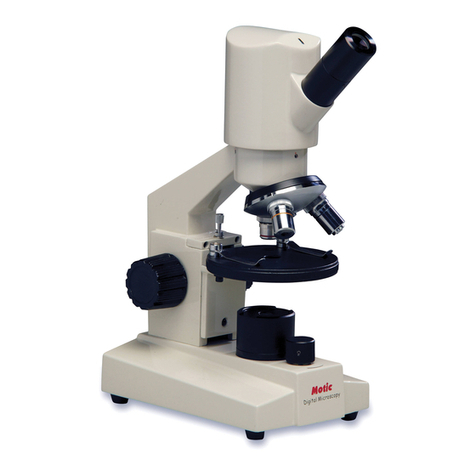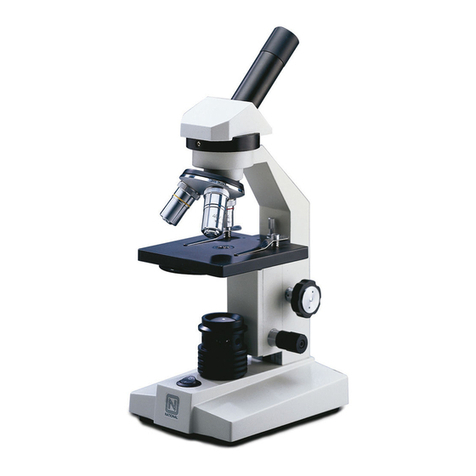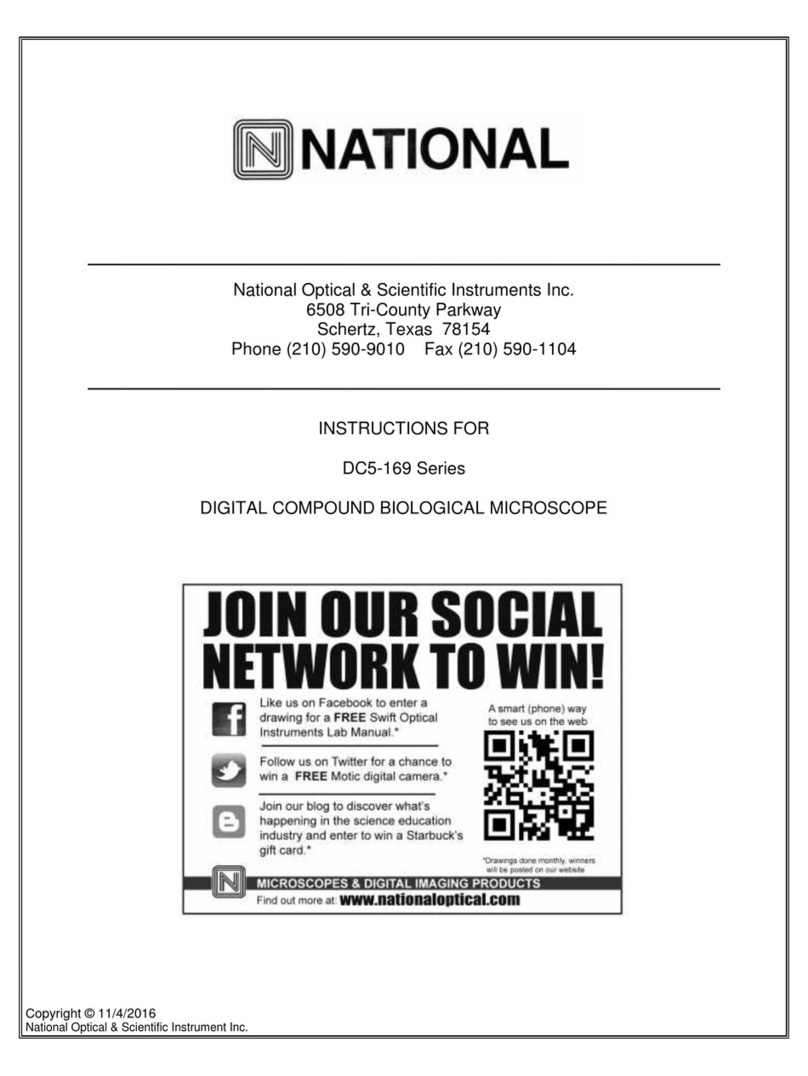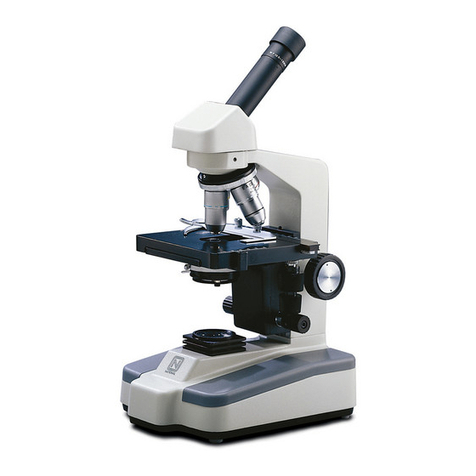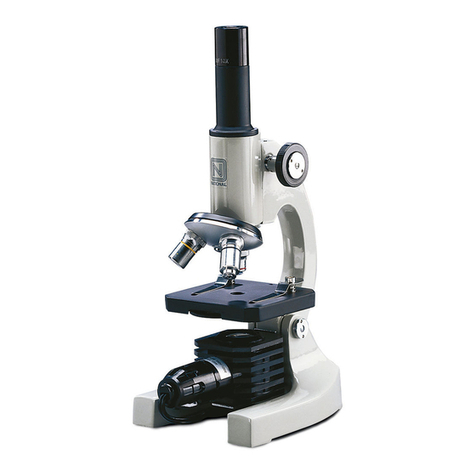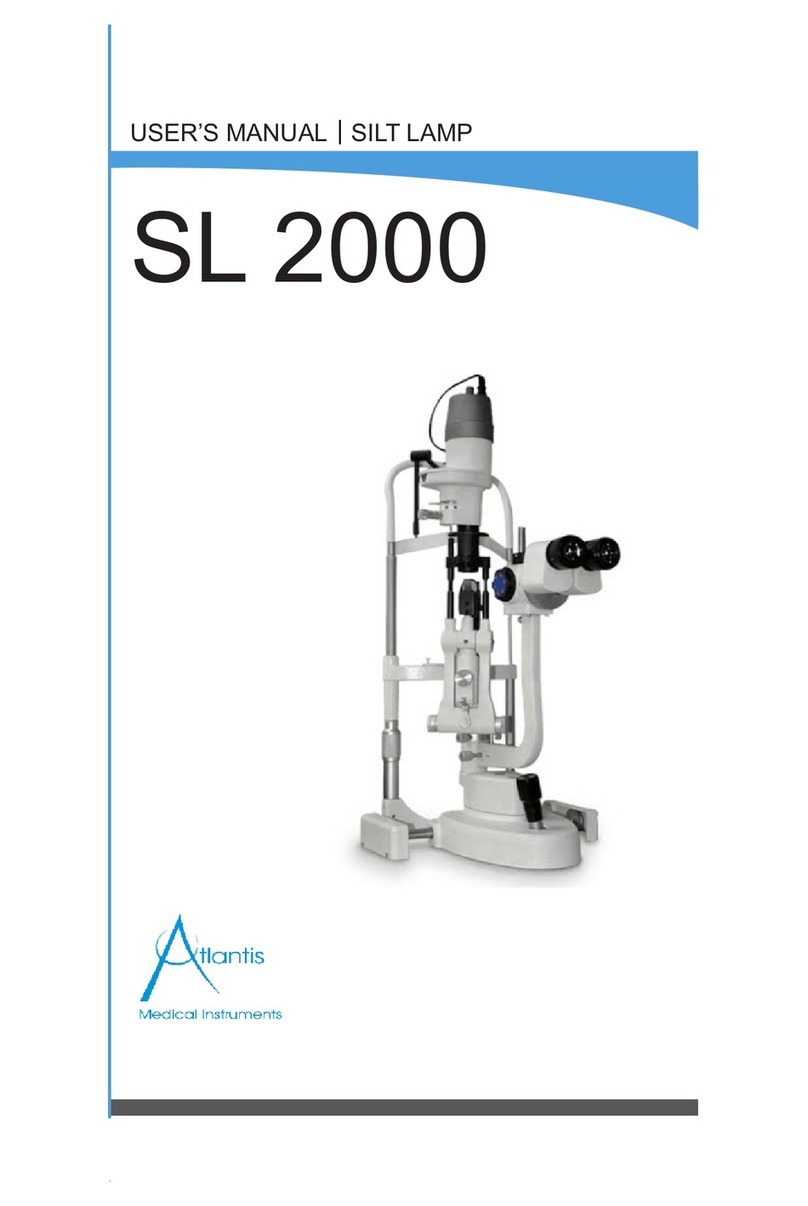
any slight pressure applied to the stage. This will cause the microscope image to move out of focus, and
you will need to readjust the tension control.
When looking at the back of microscope base (facing on/off switch), the tension adjustment wheel is the
small wheel immediately inside the large, coarse focusing knob on the left side of microscope. Insert small
jewelers screwdriver into small hole on edge of tension adjustment wheel, engage blade into set screw and
turn counter-clockwise to loosen. Do not remove setscrew from tension adjustment collar. Loosen
setscrew enough to permit tension adjustment wheel to turn freely. Turn adjustment wheel clockwise to
tighten tension and counter-clockwise to loosen tension. When desired tension is obtained, retighten
setscrew to prevent wheel from moving from desired tension.
It is recommended that you leave the tension as loose as possible for ease of focusing, yet not so loose that
it permits the stage to drift downward from its own weight and cause the microscope to “drift” out of focus.
B. Metal parts: Use a clean, damp cloth to remove dust or dirt from metal parts, followed by a dry cloth.
3. ELECTRICAL MAINTENANCE
The extent of electrical maintenance, by other than qualified technician should be charging the
batteries. Only qualified technicians should replace LED Lamp assembly and wiring contained in base.
A. Recharging batteries: Plug output cord from battery charger into DC recharging socket located on back of
microscope base. Your automatic switching recharger operates on 100 to 240 volts AC 50/60 Hz, plug
recharger into your AC wall outlet. The red LED indicator lamp located on recharger will be illuminated
when batteries are receiving maximum charge. After batteries are charged, the red LED indicator lamp will
turn to green and charger automatically switches to “trickle charge”. The charger can be left plugged in, but
for safety reasons it is a good idea to disconnect the charger from the AC wall outlet and the output cord
from recharging socket after 12 hours. Batteries and charger may feel warm when charging, and
unplugging the recharger is a safety precaution. You may operate the microscope light even while it is
being recharged. Simply flip light switch to “on” position and continue using microscope while the recharger
is fully engaged.
B. Replacing batteries: Your microscope includes 3 rechargeable AA nickel metal hydride batteries. These
may be recharged up to 1000 times, but if you observe that a recharge is providing significantly less than 40
hours of operation. It is probably time to replace to batteries.
IMPORTANT WARNING: DO NOT USE REGULAR ALKALINE BATTERIES IN THIS MICROSCOPE.
ANY ATTEMPT TO RECHARGE ALKALINE TYPE BATTERIES COULD RESULT IN BATTERIES
EXPLODING.
Gently lay microscope on its side or back. Gently pull out the four rubber feet from bottom of base. Using a
crosshead screwdriver remove the four cross head screws located in each of the rubber feet recesses.
Carefully remove black base from microscope stand and observe battery case mounted on the bottom.
Using small Phillips screwdriver, carefully remove Phillips screw that holds battery case together. Slide lid
of case straight out to remove and expose batteries. Remove all 3 batteries and replace with new
rechargeable AA nickel metal hydride batteries, making certain to insert with correct polarity according to
markings on battery holder. Replace lid, close and secure door.
Follow instructions on new battery packaging to determine if they are already charged, or if they should be
charged before initial use. If recharging is required, following directions in “3.a” above.
